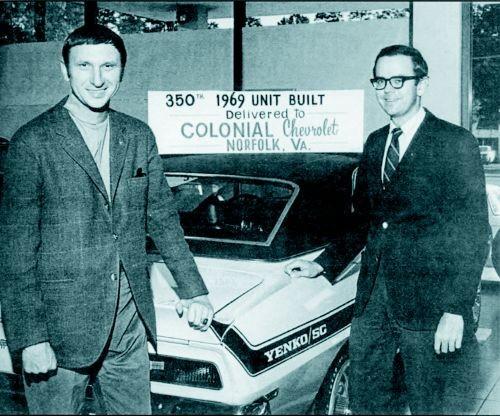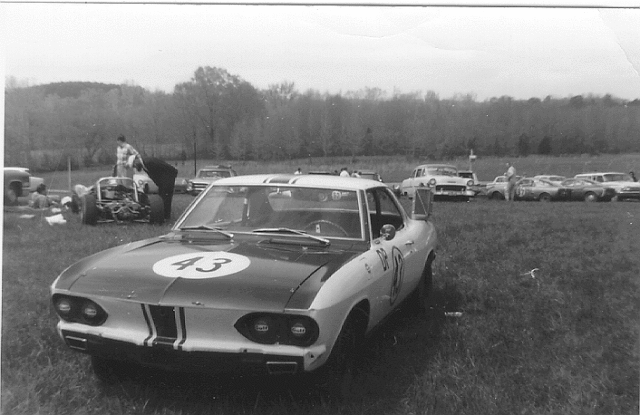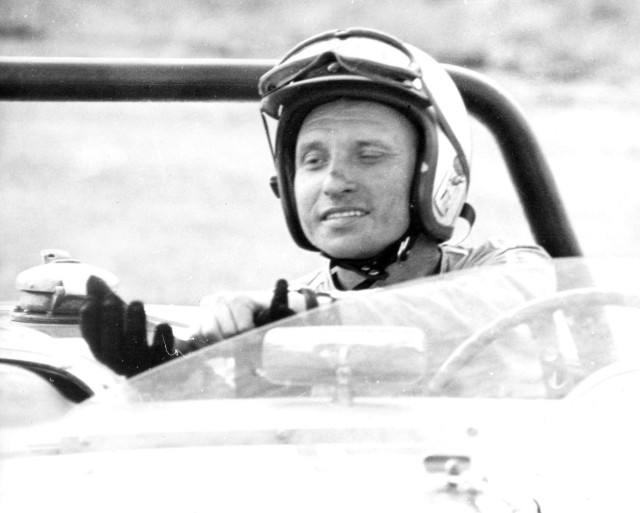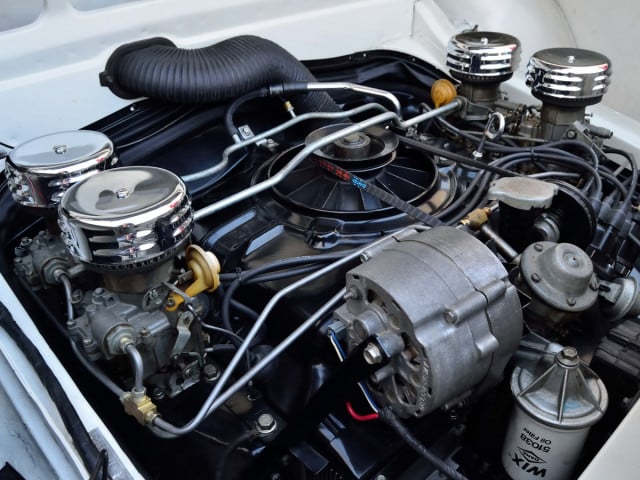 [1]
[1]Image: Hemmings [2]
Don Yenko will always be remembered for his amazing achievements in the automotive industry, most notably, bringing about the creation of Yenko Chevrolet [3] and all of the “Super Chevys” that came about because of it. But, much like most of the greats in Chevy history, Yenko wasn’t born into the spotlight. So where did it begin for him, and how did his life look before he became one of the most notable names in automotive and Chevrolet performance history? That’s what we explore today!
 [4]
[4]Image: Don Yenko Memorial Display [5]
Born in southwest Pennsylvania in 1927, Donald “Don” Frank Yenko was seemingly destined to be a part of the automotive world from the start. In 1928, Yenko’s father Frank, opened up a Durant dealership (founded by two-time terminated head of General Motors, William Durant), followed in 1934 by a Chevrolet dealership in Bentleyville, Pennsylvania, after Durant Motors Corporation went belly-up in 1932. Though Yenko grew up with his dad’s Chevrolet dealership being a vital part in his upbringing, it wasn’t until much later that Yenko made the Chevy connection of his own that led to his famed history.
When Yenko was 16, planes appealed more to him than cars, so he earned his pilot’s license. He then went on to serve in the United States Air Force, before attending Penn State University in pursuit of a degree in Business Administration. While the young Yenko was off doing his own thing, his father Frank saw so much success with his first Chevrolet dealership, that in 1949, he opened another one in Cannonsburg, Pennsylvania. When Yenko graduated college at the age of 30, it was this dealership that he took over and made history.
With connections through what was now his dealership, Yenko’s race car of choice was the Corvette, but by the mid-’60s, the Chevy two-seater just wasn’t cutting it. After the introduction of the Ford Mustang in 1964, Yenko decided to create a more competitive race car out of another Chevrolet offering. Of all the vehicles he could have modified into a high-performance machine, Yenko chose the Corvair Corsa, which offered significant weight savings as compared to the Corvette. Thus the Yenko Stinger was born.
With the original aerodynamic add-ons said to have been initially designed by using pizza boxes, Yenko surprisingly took his revised Corvair Stingers all the way to the top. In November of 1965, he got approval to run his Stingers in the Sports Car Club of America (SCCA) D Production race series, pending Yenko’s ability to produce at least 100 similair cars by January 1st of the following year. In just two months, Yenko’s hard-working team put in countless hours, and were able to meet the requirement by the start of 1966.
 [6]
[6]Image: California Connection [7]
The 1966 Stingers were modified Corsas,and all of the cars were painted Ermine White, following the SCCA protocol that all American-made race vehicles be white. The cars were available in stages I through IV, for 1966, with all cars being equipped with Muncie M-21 close-ratio four-speed transmissions.
Additional RPOs for the Stingers included heavy-duty suspensions, black interior trim, and special steering components. Two COPO options were also added to the cars, which were independent brake units, and 3.89 Positraction differentials (only half of the ’66 models got one), Positraction was not available on any ’66 Corvair, but could be special-ordered through Chevy.
For 1967, all the Stingers were modified Monzas, since the Corsa name had been discontinued. They were ordered in either Marina Blue or Bolero Red, after the SCCA dropped their white paint requirement for American-made cars. All race Stingers were ordered with the 3.89 Positraction differential and the 140hp engine (modified for various horsepower ratings).
Only 100 1966 Yenko Stingers and 25 1967 Yenko Stinger models were produced. There were also 60 Stingers that were tagged after February of 1967, bringing the grand total to less than 200 ever produced. One special 1969 Stinger was produced, known at YS-9700. This car was specifically commissioned by Goodyear for tire testing.
 Virginia International Raceway History [10] [9]" width="640" height="513" />
Virginia International Raceway History [10] [9]" width="640" height="513" />Most people know where Yenko’s story goes next, and it has everything to do with Yenko’s name being steeped in Chevy history. After racing and selling Yenko Stingers for a couple years, Yenko turned his attention to the new Camaro Z28, looking to transfer what he had learned from crafting and racing Stingers into the new musclecar. Yenko produced an estimated 107 1967 Yenko Camaro models, and an estimated 65 1968 Yenko Camaro models with both special RPOs and the COPO “Sports Car Conversion” package on them, but it wasn’t until 1969 that the famed factory 427ci special-order COPO engines came into play.
As they say, the rest is history!
